Capacitor replaces battery Mazda i-Eloop kinetic energy recovery system analysis
When it comes to the "brake kinetic energy recovery system", everyone must have been very familiar with it. The equipment that was once only a hybrid model has gradually entered the ordinary model. As an important equipment to reflect energy-saving and environmental protection, the kinetic energy recovery system is more and more Many people are familiar with each other. At the Tokyo Motor Show, Mazda released a new i-Eloop kinetic energy recovery system, which you might think is not surprising, but the i-Eloop system has a special feature.
This article refers to the address: http://
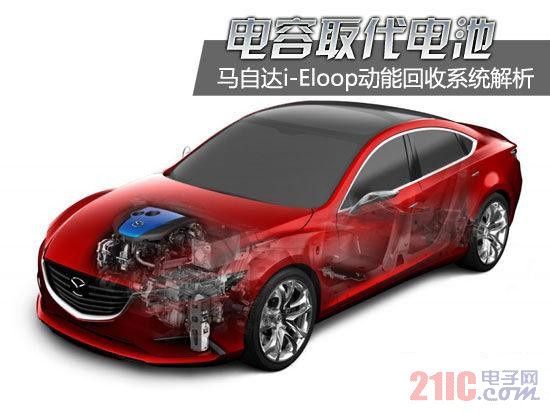
The original i-Eloop system differs from the traditional kinetic energy recovery system in that it does not use a battery as a storage medium for energy, but uses high-efficiency capacitors to store recovered kinetic energy. And this system can be used in mass production cars as early as 2012.
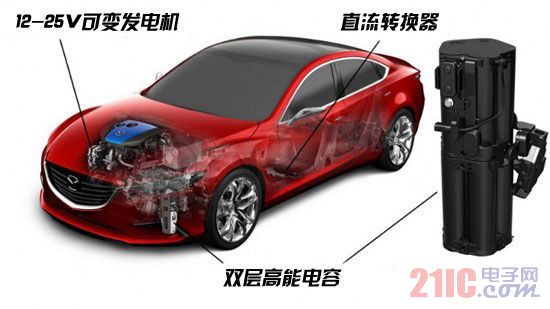
i-Eloop is an abbreviation for "Intelligent Energy Loop", which differs from existing kinetic energy recovery systems in that it replaces traditional electrical energy storage media batteries or batteries with capacitors. Mazda official said that compared with batteries or batteries, the capacitor has a more ideal charging and discharging speed, and there is no problem that the battery is easy to decline under frequent charging and discharging, which is best solved by the kinetic energy recovery system repeatedly charging and discharging the battery. Damage.
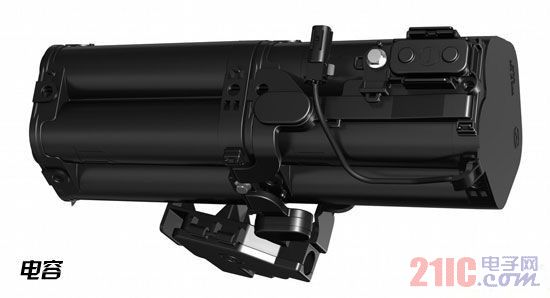
In fact, the application of large-capacity capacitors on vehicles is not a precedent for Mazda. In the first generation of Honda, Honda used thousands of large-capacity capacitors to form "supercapacitors" to store enough energy to drive the vehicle forward. But then this technology was immediately replaced by a lithium battery pack with better performance. This time Mazda re-enabled "capacitance", not to take the old road of Honda, but to make full use of the characteristics of small energy storage but instant charge and discharge to achieve the purpose of partial replacement of lithium batteries.
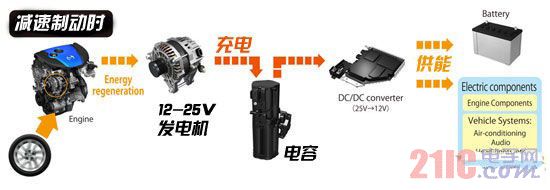
The electrical energy stored in the capacitor does not drive the vehicle forward but is sufficient to drive some electrical equipment
The i-Eloop architecture uses a 12-25V variable voltage generator and a low-resistance electric double layer capacitor as a power storage device, although the energy stored in the capacitor does not drive the vehicle forward but is sufficient to drive some electrical equipment. With the DC/DC DC voltage converter, the i-Eloop system can fully charge the capacitor in a few seconds whenever the driver releases the throttle and decelerates, while supplying power to the car's audio, air conditioning and electrical systems. Reduce the energy consumption of the engine in power generation. For systems with automatic start-stop, it can help to extend the flameout time, thus saving about 10% of fuel consumption.
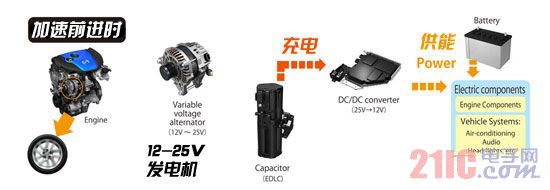
Mazda said that it will gradually replace its Skyactiv series engine with i-stop automatic start-stop system and i-Eloop kinetic energy recovery system to bring better fuel consumption to its products. With emissions performance. Mazda also said that the i-Eloop system will be available on Mazda's production models as soon as possible starting in 2012.
Ningbo Autrends International Trade Co.,Ltd. , https://www.mosvapor.com